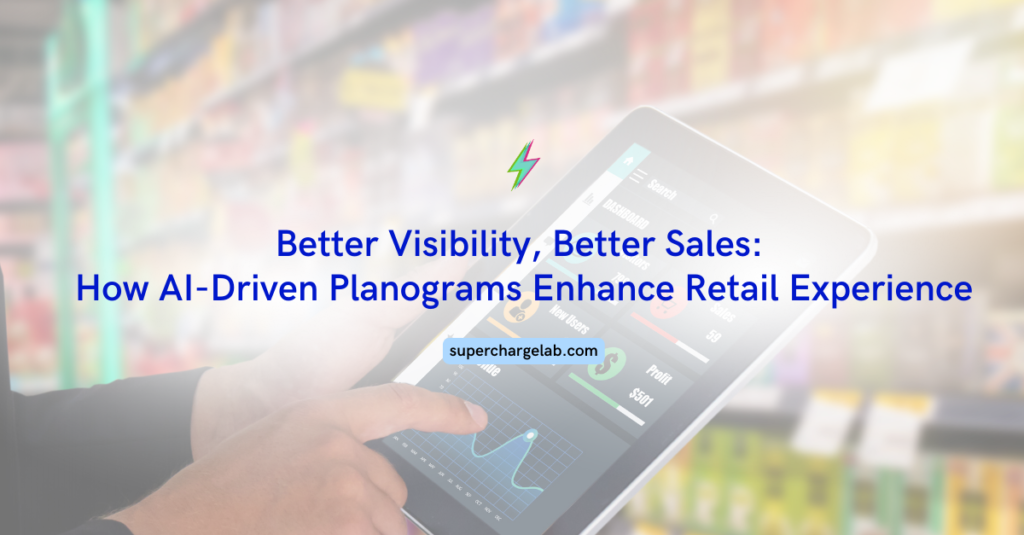
Have you ever wandered through a store and felt frustrated when you couldn’t find the product you were looking for, whilst picking all the ones you weren’t there to purchase? Perhaps you were overwhelmed by a chaotic display? This is where AI-driven planograms step in, transforming the retail landscape and revolutionizing the customer experience. AI-powered planograms, the digital blueprints of product placement on shelves, are proving to be a game-changer for retailers.
1. Shelf Optimization Planograms
have long been a tool for retailers to organize product displays. However, traditional planograms often relied on manual adjustments and guesswork. AI is changing the game by infusing planograms with data-driven intelligence. Retailers can analyze vast amounts of information, including sales data, customer demographics, and product performance, to determine the optimal placement of each item. This ensures that products are visually appealing and strategically positioned to maximize visibility and encourage purchases.
AI algorithms can identify which products are frequently purchased together and place them in close proximity, increasing the likelihood of impulse buys. They can also optimize shelf space allocation based on product popularity and profit margins, ensuring that high-performing items are prominently displayed. Many studies found that optimized planograms can lead to a sales uplift of.
2. Personalized Shopping Experiences
In the era of personalization, customers expect a tailored shopping experience. AI-driven planograms can help retailers deliver just that. By analyzing individual and cohort-driven customer data, AI creates personalized planograms that cater to specific preferences and shopping habits. This means that customers are more likely to see products that interest them, making their shopping experience more enjoyable and efficient.
Imagine a scenario where a customer frequently purchases organic products. An AI-powered planogram could prioritize the placement of organic items in that customer’s preferred store, making it easier for them to find what they need. This level of personalization not only enhances the customer experience but also fosters brand loyalty.
3. Real-Time Adaptability to Market Trends
The retail landscape is constantly evolving, with new products, promotions, and seasonal changes. AI-driven planograms can adapt in real time to these fluctuations, ensuring that store shelves are always optimized for maximum sales potential. This agility is crucial in today’s fast-paced retail environment, where staying ahead of the competition is essential.
Let’s imagine during a holiday season, AI algorithms can analyze sales data and adjust planograms to highlight seasonal items and promotions. This ensures that customers can easily find what they’re looking for, leading to increased sales and a positive shopping experience.
4. Streamlined Inventory Management
Efficient inventory management is critical for retailers to avoid stockouts and overstock situations. AI-driven planograms can optimize inventory levels by analyzing sales data and predicting demand. This enables retailers to order the right amount of stock, reducing waste and minimizing storage costs.
AI can identify slow-moving items and recommend markdowns or promotions to clear excess inventory. This proactive approach to inventory management not only improves profitability but also ensures that shelves are stocked with products that customers actually want to buy.
5. The Future of Retail
AI-driven planograms are revolutionizing the retail experience, empowering retailers to create visually appealing, personalized, and profitable store layouts. As AI technology continues to advance, we can expect even more sophisticated planogram solutions that leverage machine learning, computer vision, and natural language processing.
This could lead to the development of planograms that automatically adjust based on real-time customer behavior and feedback. We might also see the integration of augmented reality (AR) and virtual reality (VR) technologies into planograms, allowing customers to visualize products in their homes before making a purchase.
The future of retail is more advanced, and planograms are just one of many examples. Implementation of AI in retail can significantly enhance the customer experience and boost sales by creating personalized shopping journeys, optimizing store layouts, and streamlining operations. If you’re ready to leverage the power of AI to transform your retail business, book a session with our experts today.
We’ll help you explore the possibilities of AI-driven planograms and other solutions for your retail industry. https://calendly.com/superchargelab